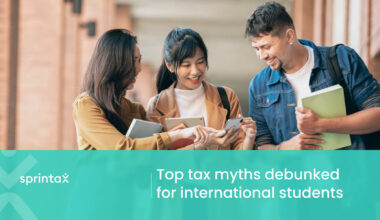Preparing a 1042-S isn’t an easy task, and to make matters worse, filing incorrectly can lead to penalties, fines and unnecessary stress.
But not to worry, today we will address some of the most common questions associated with filing a 1042-S: What is a 1042-S? How do I know what income to report? What deadlines should I be aware of when filing a 1042-S? Should I be aware of any recent changes to the document?
In this blog post, we’ll explain everything you need to know about the 1042-S!
Table of Contents Show
What is a 1042-S form used for?
Form 1042-S (Foreign Person’s U.S. Source Income Subject to Withholding) is used to report any payments made to foreign persons.
Forms 1042-S and 1042 (Annual Withholding Tax Return for U.S. Source Income of Foreign Persons) are IRS tax forms that deal specifically with payments to nonresident aliens and other foreign persons.
What is the difference between Form 1042 and 1042-S?
The main difference between form 1042 and 1042-S is that form 1042-S is used to report payments made to foreign persons, while 1042 deals with determining how much tax will be withheld on certain income of nonresident aliens and other foreign persons.
Who must file 1042-S?
If you are a US person, business, or institution that provides an income to non-citizen workers, you will need to file a Form 1042-S.
The form is relevant to all payments made to non-resident aliens that are subject to tax withholding – so this includes foreign partnerships, foreign corporations, foreign estates, and foreign trusts. It’s also relevant for schools and universities in the US.
If your institution’s employees are non-US citizens, it’s your responsibility to file on their behalf. This might be a cafeteria worker or a college tutor for example. A copy of the Form 1042-S must also be sent to the nonresident alien individual.
A Form 1042 summarizes the information reported on a 1042-S which you issue to your students and employees. It reports the liability of the withholding agent on the tax they have withheld or should have withheld.
You are informing the IRS of the total cumulative amount of payments which you have paid to a non-US person during the tax year.
There are certain income codes for 1042-s forms that will also alleviate potential confusion on whether or not you need to file.
For example the following income codes are relevant to form 1042-s.
- 1042-S income code 01 – Interest paid by US obligors—general.
- 1042-S income code 06 – Dividends paid by US corporations—general
- 1042-S income code 16 – Scholarship or fellowship grants
- 1042-S income code 42 – Earnings as an artist or athlete – no central withholding agreement
- 1042-S income code 43 – Earnings as an artist or athlete – central withholding agreement
How do I determine if an income should be reported on a 1042-S?
Form 1042-S allows us to report any payments you pay to a foreign person.
However, it’s crucial for the payroll office to understand what kind of income should be reported on a 1042-S.
If you have any concerns about this, don’t worry! Sprintax Calculus (formerly Sprintax TDS) is here to help you make sense of it all.
Schedule a Free Demo for Sprintax Calculus

What income should I report on a 1042-S?
In order for income to be reportable on a 1042-S, it must have been earned in the US by a foreign person or it must be income exempt under tax treaty or other IRC article covering non-US person’s income.
Do report:
Payments like interest and dividends, payments for scholarships and grants, except payments for tuition to a degree candidate, rents and royalties and licensing fees if they were earned from sources inside the US.
Don’t report:
Payment for goods, inventory, equipment, raw materials etc. Money generated from these sources should not be reported when paid to a foreign person.
When is the due date for filing Form 1042-S ?
The deadline for filing Form 1042-S with the IRS is 15 March of the next tax year.
You also must provide a 1042-S copy to your payees by 15 March after the year ending.
Can you get an extension for a 1042-S?
Filers may request an automatic 30-day extension by filing Form 8809 (Application for Extension of Time to File Information Returns) no later than 15 March of the next tax year. A second extension may be requested with Form 8809, but approval is not automatic.
It is possible to request a third or fourth extension but unfortunately, the chances of receiving a response or approval for more than two extensions are slim to none.
Furnishing a recipient (payee) copy
The due date is 15 March of the year after the tax year of payment. The filer must provide their students directly with a copy of the form.
Can Form 1042-S be filed electronically?
All financial institutions (including investment funds) must file Forms 1042-S electronically through the IRS’s Filing Information Returns Electronically (FIRE) system, regardless of how many forms they file.
Other entities that file 250 or more forms must file electronically as well. The IRS will confirm within five business days that the transmission was successful. Look at the Specifications for Electronic Filing in IRS Publication 1187 for Tax Year 2024 for guidance.
Remember – you can use Sprintax Calculus to automatically generate your 1042-S!
Filing with Calculus saves you the time and stress of managing all of your employee’s tax obligations individually.
To date, over 450 organizations in the US have chosen us to help manage the taxation of their nonresident employees!
How to correctly file a 1042-S
There are certain mandatory fields that you must fill in, in order to correctly file a 1042-S but it’s also important to note that you must assign each form a unique 10-digit numeric identifier number for each 1042-S that you prepare.
If you pay different types of income to a single payee – say for example you’re paying them interest and dividends – you will need to fill out two separate 1042-S forms because you have two different income types. Even though it’s the same payee, you need two separate identifiers.
This unique identifier is required if you need to make an amendment to the Form 1042-S, otherwise it would be impossible for the IRS to distinguish between forms and understand which form you are amending.
What are the fines and penalties for incorrectly filing?
Unless you can prove that you did not file a 1042-S due to a reasonable cause, instead of willful neglect, you will likely be hit with fines and penalties.
Remember, if you need more time, you can apply for an extension of time to file the forms.
For 1042-S forms that are due in 2025, the penalty for failure to file by the deadline, or not filing the form at all, is a maximum of $340 per form.
This fine is increased to $680 (if greater, 10% of the full amount still required to be reported, with no maximum figure) if you intentionally do not report the correct information.
Which fields are mandatory for a 1042-S?
There are a number of fields that are mandatory on the form but which fields you fill in will often depend on the person whom you’re filing for and their own unique personal circumstances.
Our tax determination software performs these checks and the population of the forms.
Learn more about Sprintax Calculus.
What else should I know about the form?
Over the years, there have been some changes made to the 1042-S. Changes on the boxes include:
- Boxes 7b and 10 have been updated with clarifying language
- Boxes 9 and 11 have been switched and clarifying language has been updated
- Limitation on Benefits (LOB) Treaty Category code for individuals (code 01) has been removed
- Box 13j should be left blank for payments made to an individual who is claiming treaty benefits.
- Box 13i now has its own row (*note: Format is YYYY/MM/DD)
Need help with preparation for filing 1042-S?
In order to transmit 1042-S informational text files electronically through the Filing Information Returns Electronically (FIRE) system, you must have suitable software, a service provider, or an in-house programmer that will create the file in the proper format per IRS requirements and record layouts found in publication 1187.
That’s where Sprintax can help you out!
Sprintax Calculus is a tax determination software solution that creates compliant tax documents for you.
You can use your own Transmitter Control Code (TCC) or you can choose Sprintax to be a transmitter for you.
Sprintax Calculus is here to assist you with the more complicated aspects of tax filing prep by simplifying nonresident taxes.
Sprintax Calculus means compliant, stress-free tax returns.
Connect with Sprintax today to schedule a free demo for your international office.









